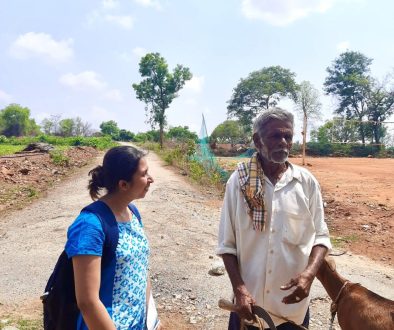Preparing the Next Generation for the Impacts of Climate Change
Climate change is having, and will continue to have adverse effects on the environment and society. This year alone is predicted to be the hottest since records began. Therefore, educating young people is crucial to prepare the next generation to be able to adapt to and mitigate against climate change.
Climate education helps to give young people the skills and knowledge to be able to take on these challenges. Despite the importance of climate education, it varies widely depending on location and fails to equip all young people with these skills equally.
To address some of the failings of climate education within England, the Department for Education (DfE) created a strategy on sustainability and climate change within schools. In this blog, I will critically review this strategy and question its ability to give young people the climate education they need to deal with climate change both now and in the future.
The Department for Education Strategy
The main goal of this strategy is for the UK to be the world-leading education sector in sustainability and climate change by 2030. There are 5 action areas to help achieve this goal. They are; climate education, green skills and careers, education estate and digital infrastructure, operations and supply chains, and international.
This blog will focus on primary and secondary research I completed on the climate education action area, which includes goals such as; introducing a Natural History GCSE, the strengthening of the teaching of sustainability within existing subjects, building on knowledge through Science and Geography, increased opportunities to learn in the natural environment, and learning about the natural environment from a younger age.
Academic Literature
A number of different academics across various disciplines have written about climate education to discover how it is currently being taught, and the best ways to teach it to increase its effectiveness.
Within England and further abroad, young people are traditionally taught climate education within STEM (Science, Technology, Engineering, and Maths) subjects, and this focuses on the knowledge of climate science. Climate education currently appears in the English curriculum within these subjects, and also in Geography. However, it is largely absent within primary schools. In the past, it has been assumed that teaching children scientific knowledge of climate change will lead to increased climate action and more friendly attitudes and behaviours.
This assumption is now challenged by contemporary academic research, which shows this method to not be effective. This is because climate change is highly interdisciplinary, and focusing on climate science ignores the social, political and economic factors which are embedded within it. Non-scientific drivers of climate change are subsequently ignored, despite their equal significance to the scientific drivers.
Teaching within English schools can also be described as traditional, with lecture style learning. To increase the effectiveness of climate education, it has also been recommended to move away from this style of teaching and for more non-traditional methods to be embraced. For example, using art and other creative methods.
It can be argued that the DfE strategy is not engaging with the most effective means of climate education recommended by the academic literature. Despite its initial promise, the DfE strategy plans to keep the teaching of climate education within the existing curriculum and does not focus on its interdisciplinary nature. It also has a heavy focus on scientific knowledge and is framed in a way which focuses on how climate education can be used to increase economic growth.
Challenges to Teaching Climate Education
Teachers themselves are vital to climate education, and it is important to take their opinions and concerns surrounding the DfE strategy seriously.
The teachers in my interviews have identified several challenges that would make it hard to implement climate education within England;
- A lack of time available à the curriculum is already content heavy, and adding in more topics would be hard without having to remove others
- Funding à some of the DfE measures would be hard to implement without increased funding. E.g. introducing the Natural History GCSE would depend on schools having access to funding to pay for additional staff and resources
- Differences between schools à some schools are more focused on climate change and climate education than others. There is also likely to be a difference in the levels of climate education for young people depending on the GCSEs they choose to take, and what their school offers
Conclusion
Whilst climate education within England is moving in a positive direction, this is not happening at a fast enough rate nor is it following guidance from academics to make it as effective as it could be. Concerns from current teachers, and the ways the strategy differs from academic guidance suggests that the DfE strategy might not be as effective as initially hoped.
Therefore, I will end this blog with some recommendations gathered from my research which could improve its effectiveness:
- It needs to engage with the non-scientific drivers of climate change as well as the scientific ones. This ensures that students learn about climate change in an interdisciplinary way.
- Climate education needs to be taught in all subjects, for example, Art, English and other creative based subjects
- More support is needed from the DfE to ensure that the strategy is implemented equally across the country.
Photo by Sam Balye on Unsplash
Authors

Sophie Wheeler
Share this article
Follow us



